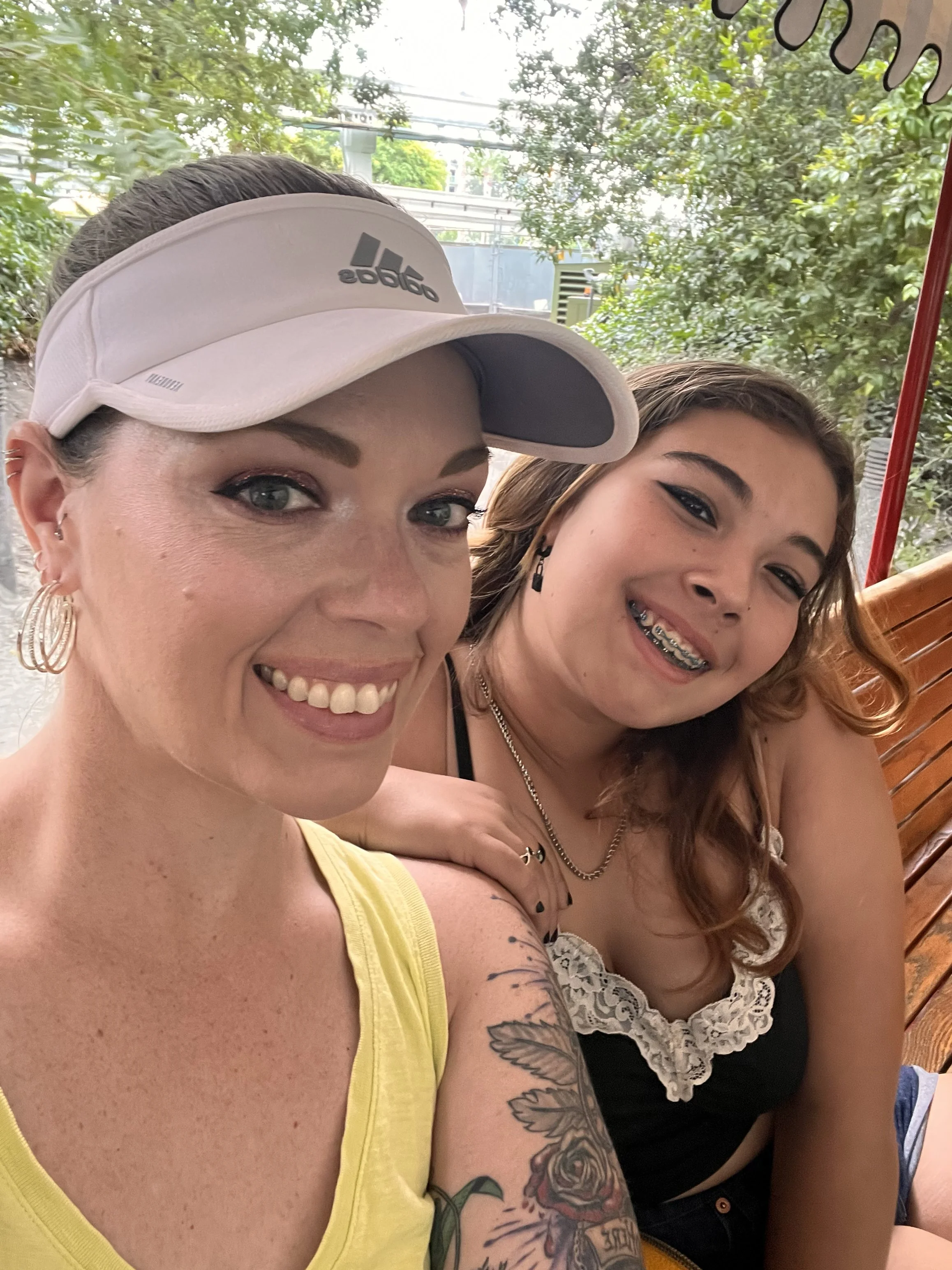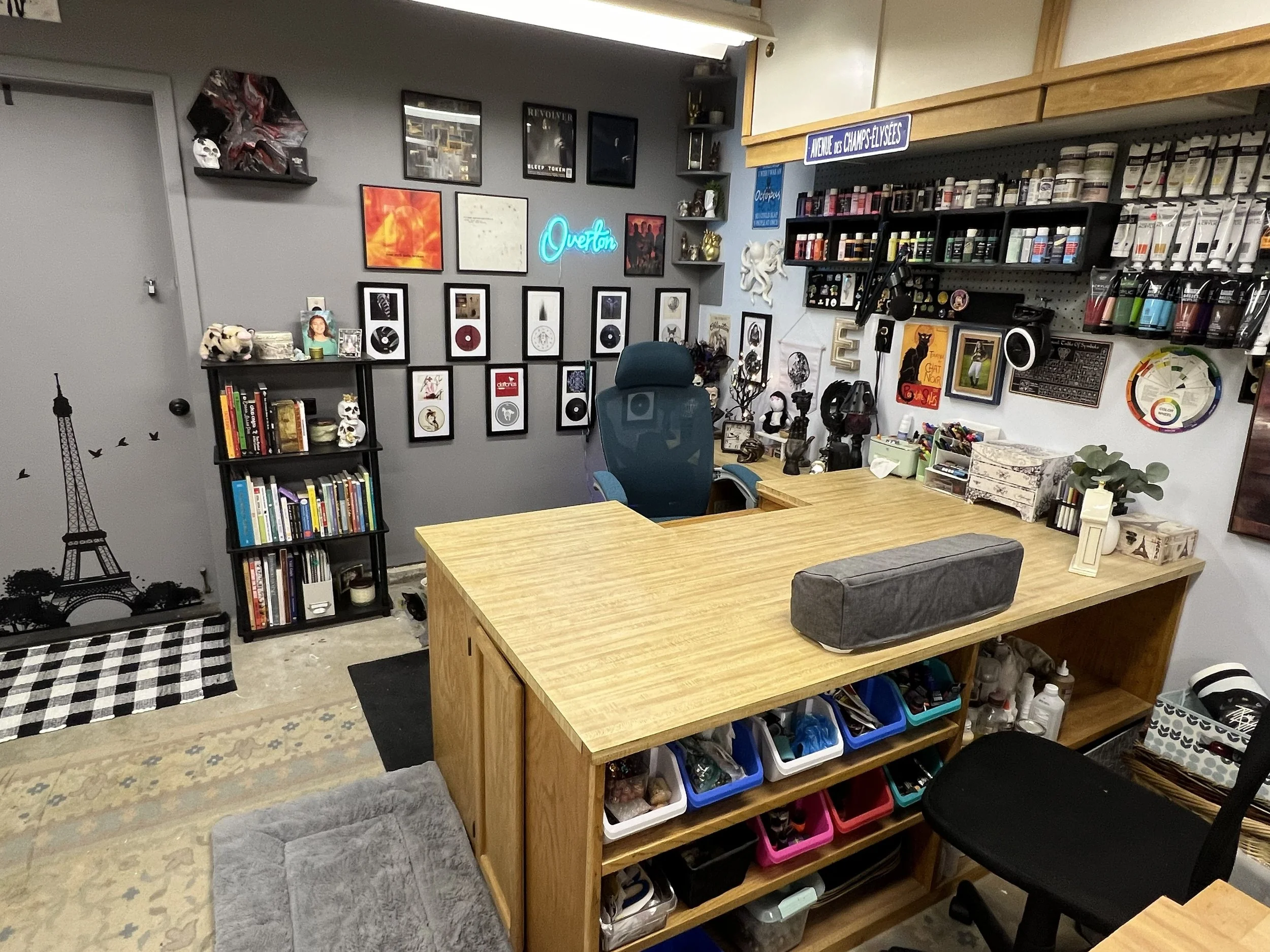My story
My name is Elizabeth, and I have social anxiety, chronic depression, and ADHD. They’re conditions that took a while for me to accept. Terms like “crazy” and “insane” can make it difficult for someone like me to want to seek diagnosis and treatment. There are so many negative associations with the term “mental illness”. People tend to imagine a disheveled, un-housed person on the corner of a busy intersection, talking to themselves. You won’t find many people that are overjoyed at the thought of being “medicated” and it may be difficult for someone to trust prescriptions if they or their family have a history of substance abuse. That was one of my hang-ups. I grew up in an environment surrounded by addiction. I swore that I would never end up like them. The fact is, a lot of the prescriptions for mental health are addictive and can have severe withdrawal symptoms.
I have been around mental illness all my life. My mother was bipolar and did not seek help until I had left for college and had multiple hospitalizations in the psych ward. As I came into adulthood, I was afraid that I would be diagnosed as bipolar as well. You’d think substance abuse would be my biggest fear but no, it was the thought of that diagnosis that gave me chills, even more so when I became a mother. I know that a lot of my issues come from my own mother, and it was a real fear that they were symptoms of bipolar disorder. I know I shouldn’t have ignored things as long as I did. Waiting so long to seek out my diagnoses has done a lot of life damage, maybe more than I would like to admit.
Growing up in a difficult situation, I matured very quickly. I was forced to be self-sufficient by the time I was around 7 or 8. We moved around a lot. I didn’t go to the same school two years in a row until I hit 8th grade. Art, music, and books became my best-friends. I would retreat into my own world. I still have a high tendency to talk to myself. Being brought up by someone with bipolar disorder, severe addiction, and narcissistic tendencies made my natural propensity for introversion that much worse. I never tried to make friends because I knew that I wouldn’t be around long enough for any kind of true bond to form. I was always the “weird” kid alone in the corner of the playground. I still don’t like crowds, parties, surprises, or physical touch.
In my mid 20’s, I was diagnosed with severe anxiety. In my early 30’s, I was also diagnosed with chronic depression. But even after the depression diagnosis, I knew that something was still off. When the pandemic lockdowns began, I got to the point where I just couldn’t function anymore. I could not concentrate on any one thing. However, the thought of adding one more diagnosis just felt like too much (did I mention that I also have fibromyalgia and a history of heart arrhythmia?). After finally accepting that I couldn’t continue to ignore the symptoms, I saw my doctor to get tested for ADHD. It did not take long for her to diagnose me.
The kiddo. My reason for breathing.
I started treatment immediately. The medication, in combination with research about ADHD, how it interacts with both anxiety and depression, as well as beginning therapy, has allowed me to better understand myself: my triggers, my symptoms, what helps and hinders me, and what I need to be successful. It’s done wonders. But, like any other mental illness, it’s not always going to be sunshine and roses. Anything can trigger me.
Even on medication, certain symptoms are still a constant work-in-progress. One of my most severe traits is hyper-fixation. I will grasp on to something, be it an idea, event, place, or even person, and it will become my obsession until the next thing catches my attention. All my time, money, energy, and thoughts become devoted to my fixation. I know more about the history of Westeros from Game of Thrones than I do about American history. I could teach college courses on the Trojan War and Greek Mythology. I could write in-depth biographies on Walt Disney, Leonardo DaVinci, and Trent Reznor. I find it difficult to let a current fixation sit in the back of my mind so that I can focus on task on hand.
It’s difficult for a lot of people to comprehend what it’s like living with an invisible illness. I’ve been perceived as flighty, weird, stand-offish, moody, blunt, difficult, distant, and cold. When I don’t take my medication regularly, I get extremely tired and have a difficult time focusing. There’s also no perfect medication cure-all. It can take time to find the right balance of prescriptions for each patient. It took two doctors almost two years before I found some semblance of balance. It also must be monitored regularly to allow for adjustments as circumstances change.
The boyfriend. Ten years and counting.
There are times when my anxiety shuts me down. When I’m in a crowded area, in a new situation, or in a room full of strangers, I retreat into myself. I feel a bit like Alice, just trying to find a way out of Wonderland and back home. When I’m in a severe bout of depression, it really does feel like I’m Eeyore, living under a rain cloud. It can make me appear difficult to approach.
I began a new career in June of 2022, and while I’m eternally grateful to be working for such a great company, changing employers is stressful. Add in a heap of personal issues, a month of no insurance and being out of meds and I had a trifecta of stress. Add in that it all happened in the same month. Yes. 30 days of mental horror without reprieve. It threw me into one of the worst episodes of depression that I’ve ever gone through.
I knew it was coming. I could feel it. Instead of doing what I always do, which is to keep it all to myself, keep it all inside and let it fester, I reached out. I reached out to my dad and his wife. My dad is amazing. Since he came back into my life in my early 20’s, he has become the most important man in my life... just don’t tell my boyfriend that.
Shortly after I reached out, my step-mom gave me some paint brushes, bottles of paint (colors a bruise: blue, purple, black, brown, grey, ochre, and green) and canvas board, and told me to just, “Paint.”
Here’s the thing: while I am an artist, I’d always considered myself a “fine artist”, specializing in realism, portraits, and lots of fine detail. My drawings and paintings take a long time because it gets to be very tedious. I’ve never considered myself an abstract artist. I’ve always gone into an art piece with a plan. Always thinking “this is what I have to do.” I must have an idea before I start.
It has been suggested to me, multiple times by many people, that I should start a journal as a form of self-therapy. The problem is, I’m terrible at journaling. Terrible! I will do one, maybe two pages, put the journal on my nightstand, and never think of it again. Then I go to Barnes and Nobel, find a new journal, and think, “This looks like fun,” buy it and repeat the whole process again. I now have a collection of 10-15 journals... all with a couple pages of writing.
I’ve tried everything from just blank pages to prompts to workbooks, but I just can’t do it. It’s probably the ADHD, but I just can’t. My stepmom knew that. When she came over and handed me supplies, she said, “Don’t think. Just feel. Just paint. Don’t think about a picture. Just add color. This isn’t a piece that you’re going to want to sell or put in a portfolio. It’s just going to be you and paint. Nobody even has to see it.” After she left, I did just that. I squirted blobs of paint on the canvas and smooshed it in. What came out of it was eye opening. I had journaled. I had used that canvas and that paint to visually show my feelings. Being a visual person, it was eye-opening. It was tremendous. It was vital. It was a way that I could journal, express my feelings, and show people what’s truly going inside my head.
With the “journal entries”, I don’t think, I just paint my feelings. Some of them are ugly and chaotic because that’s how I was feeling at that moment. Some are beautiful and peaceful because that’s how I felt while I was painting it. I don’t go into any of my paintings with something particular in mind. I pick a medium, then colors, then the surface, and I just go. Sometimes, the painting will end completely different than how it started. I’ll add to it or try a new technique, just to see what happens.
From October 2022 through October 2023, I created at least one painting a day. Nothing was pre-planned. I grabbed whatever medium, canvas, and colors I’m was feeling in that moment and made. Just made. I posted my paintings, along with a daily blog. I wanted to share what the daily struggle was like. The highs and the lows. Candid. Unfiltered. Raw. I believe people will connect more with that than if I were to have painted rainbows and sunshine every day. There is no such thing as perfect, no matter what social media may say. I strive to help to reduce the stigma that comes mental health struggles. I may have done this for me but maybe, just maybe, it may help someone else.
The studio… aka, my happy place.
Bottom line is that overall health begins with your mental health. There are multiple studies showing the correlation to mental wellbeing and physical wellbeing. The reality is that mental illness is more common than one may believe. I, personally, believe that the current statistics are understated, due to underreporting. The reason that I’m so open and honest about my conditions is twofold. First, I want to let those around me know why I am the way I am. It helps to foster a good working relationship. But more importantly, because the more we talk about it, the less stigmatized it becomes, the more people will begin to feel comfortable talking to their doctor and to seek treatment. No one should be ashamed of who they are.




